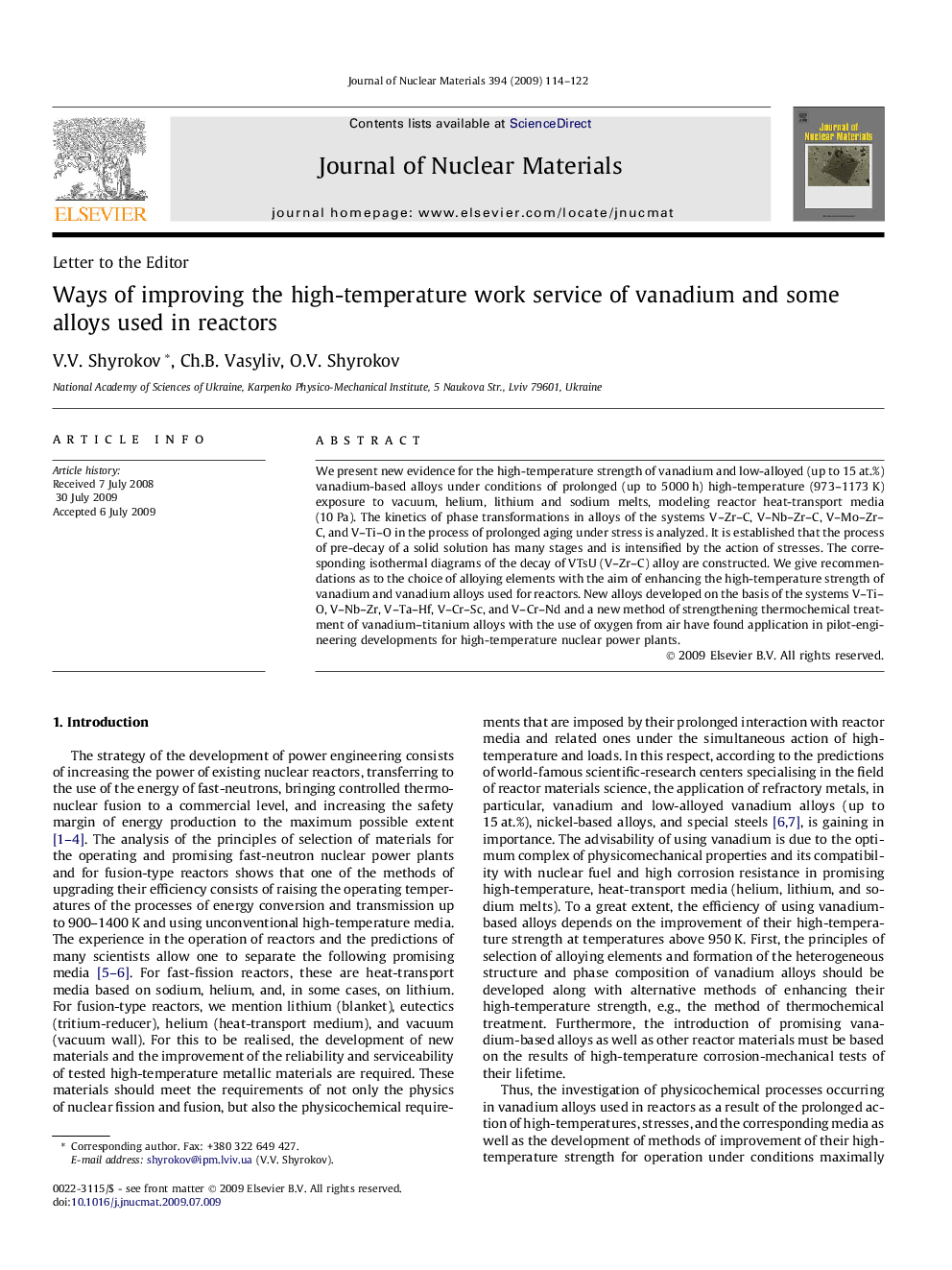| Article ID | Journal | Published Year | Pages | File Type |
|---|---|---|---|---|
| 1567688 | Journal of Nuclear Materials | 2009 | 9 Pages |
We present new evidence for the high-temperature strength of vanadium and low-alloyed (up to 15 at.%) vanadium-based alloys under conditions of prolonged (up to 5000 h) high-temperature (973–1173 K) exposure to vacuum, helium, lithium and sodium melts, modeling reactor heat-transport media (10 Pa). The kinetics of phase transformations in alloys of the systems V–Zr–C, V–Nb–Zr–C, V–Mo–Zr–C, and V–Ti–O in the process of prolonged aging under stress is analyzed. It is established that the process of pre-decay of a solid solution has many stages and is intensified by the action of stresses. The corresponding isothermal diagrams of the decay of VTsU (V–Zr–C) alloy are constructed. We give recommendations as to the choice of alloying elements with the aim of enhancing the high-temperature strength of vanadium and vanadium alloys used for reactors. New alloys developed on the basis of the systems V–Ti–O, V–Nb–Zr, V–Ta–Hf, V–Cr–Sc, and V–Cr–Nd and a new method of strengthening thermochemical treatment of vanadium–titanium alloys with the use of oxygen from air have found application in pilot-engineering developments for high-temperature nuclear power plants.
